Some swords have grooves on them. Grooves are called "hi" in Japanese.
Bo-hi (normal width groove)
Most common groove that we can find on Japanese blades. In shinogi-zukuri blades, the width is almost that of shinogi-ji. In hira-zukuri blades the width is 1/3 or 1/4 of the blade width.
Usually this grooves are purposed to make the weight less. On short blade, it may be for decoration.
Futasuji-hi (double narrow grooves)
Most of cases, they are made for decoration.
Soe-hi and Tsure-hi (by-running groove)
It is a single narrow groove that appears along normal width groove. Most of cases, it is just for decoration to add the beauty.
When the top of groove doesn't turn toward the top of the wider groove, it is called Soe-hi.
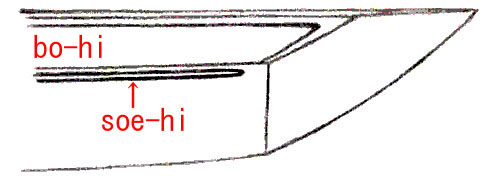
When the top of groove turns along to the top of the wider groove, it is called Tsure-hi.
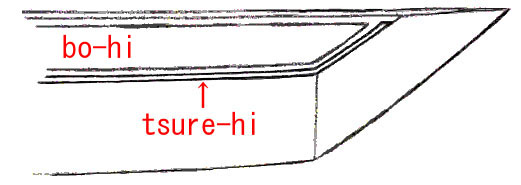
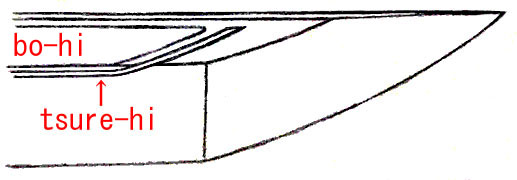
Shinogi-hi
It is a narrow groove that put on the shinogi line.

Naginata-hi and Shinogi-hi
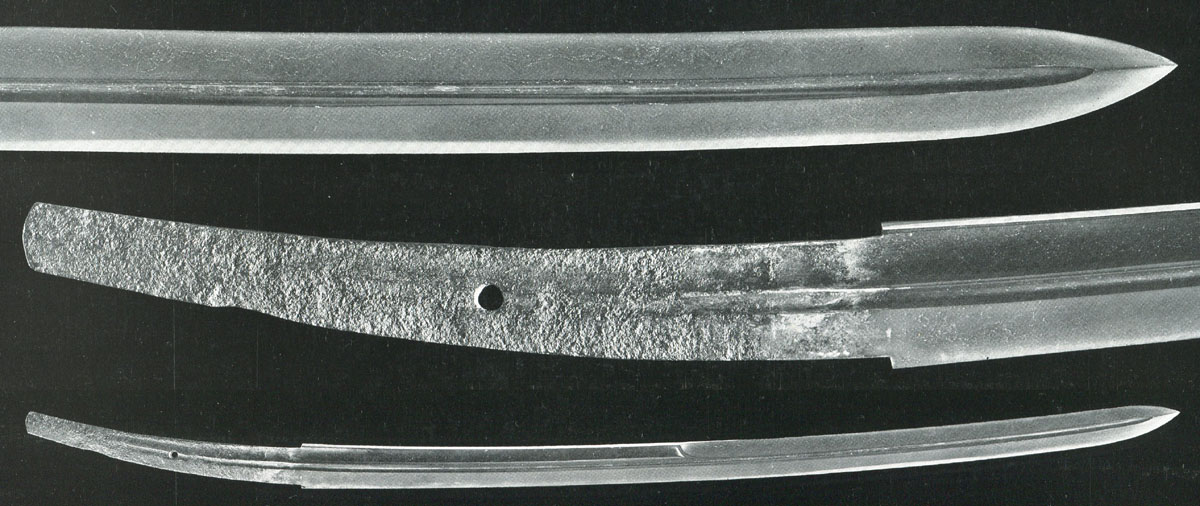
Naginata-hi
It appears on Kanmuri-otoshi-zukuri blades or on Unokubi-zukuri blades. The top of Bo-hi is shaped so according with the blade shape. Sometimes it is followed with Soe-hi.
Koshi-hi (short groove)
This is a short groove with rounded top.
Usually it suggests the sword of the Buddha "Fudo-myo'o". Its meaning is the same to the engraving "Ken" that is the symbol of power of Buddha. Sometimes Koshi-hi can mean any Buddha. It is the most simple symbol of prayers.
It is not a decoration, so it must appear on one side of the blade.



Hashi or Goma-bashi (chopsticks)
This is double narrow short grooves with the same length and rounded top.
These are symbol of chopsticks that used for a Buddhism ceremony. So they also mean a power of Buddha.
Combination of grooves
Bo-hi or Futasuji-hi doesn't have any special meaning by them selves. When they appear on each side of blade, it can have a meaning of prayer. They may suggest a Buddha and his two valets. A main Buddha with two second Buddhas is common motif in Buddhist images.


Koshi-hi with longer Soe-hi also appears on short blades sometimes. It may suggest a Buddha with his pole arm.

Grooves on Yari
We don't have a specific name to this kind of wide groove. It is just for less weight.

Kusabi-hi (zigzag groove)
Sometimes, we find a strange groove on Yari blade that is engraved zigzag. We don't know the reason why the smith made such a complicated thing. Probably there was some meaning in old days. Someone said that such yari was used for execution, but we don't believe that.

Grooves are simple, but old people includes serious pray into them sometimes. Today, we are forgetting the meaning of them and overlook them as an art.
We rarely find red lacquered grooves or engravings today. Such grooves and engravings were not so rare in the past. In nowadays, polishers remove the red lacquer through their re-polishing work. It may be more convenient than fixing the lacquering. But we don't know if the colour had some meaning in old days.
Stopping of grooves
The end of grooves, opposite of top, have several styles. The difference of the styles doesn't have any spiritual meaning. It is just a meaning of decoration.
Some grooves stop in the blade, not run into the tang. The styles of stopping are round stop, square stop, and slant stop.

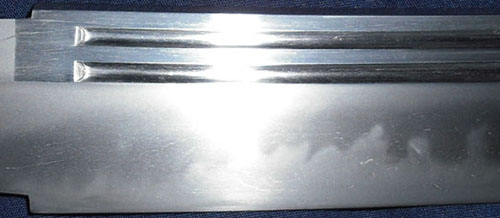
When the groove runs into the tang, there are two styles, one is flowing into the tang and the other is running through the tang.
The flowing style is that the groove runs into the tang and vanishing. This is a natural way to engrave grooves.
The groove running through the end of tang is a decorative style. We often find it on Shin-shinto blades.